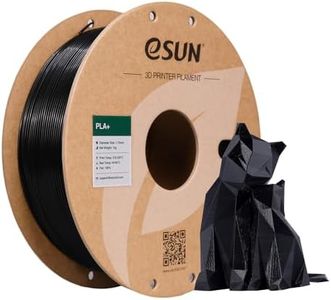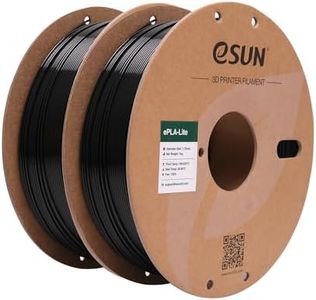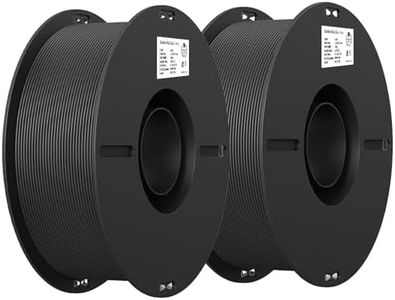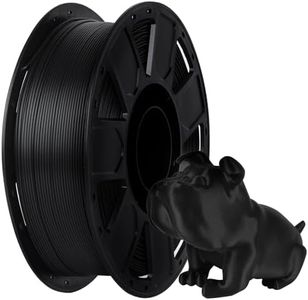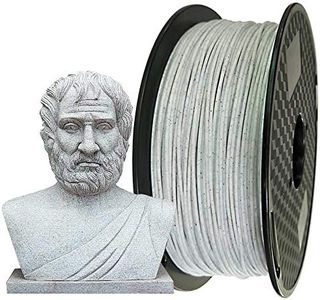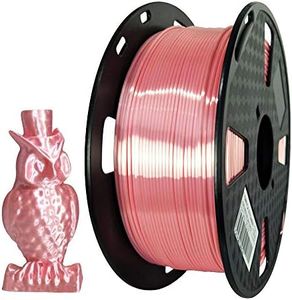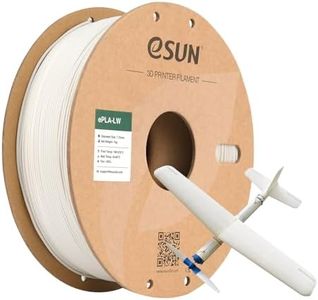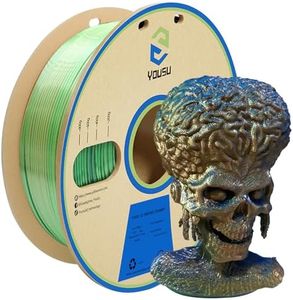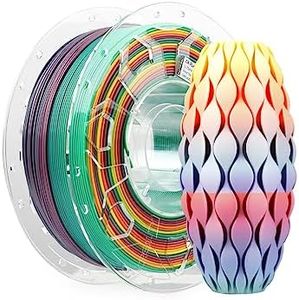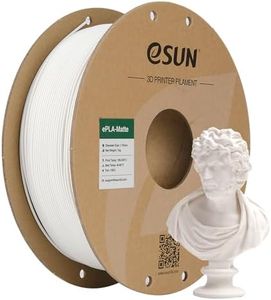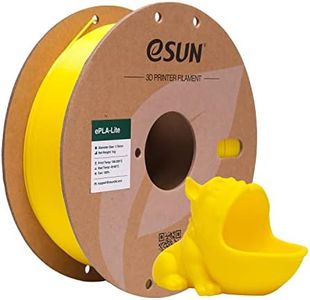We Use CookiesWe use cookies to enhance the security, performance,
functionality and for analytical and promotional activities. By continuing to browse this site you
are agreeing to our privacy policy
10 Best PLA Filaments
From leading brands and best sellers available on the web.Buying Guide for the Best PLA Filaments
Choosing the right PLA filament can make a big difference in the success and quality of your 3D prints. PLA, which stands for Polylactic Acid, is a popular and beginner-friendly 3D printing material due to its ease of use, minimal warping, and environmentally friendly nature. When selecting a filament, it's important to focus on the characteristics that best match your printer and the end-use of your project. Understanding critical aspects such as diameter, color, tolerance, spool size, and special additives will help you make a decision that leads to smoother printing and better results.DiameterDiameter refers to the thickness of the filament and is measured in millimeters. Most common sizes are 1.75mm and 2.85mm. The correct diameter is crucial because your printer is designed to handle only one size—using the wrong one can cause jams or inconsistent extrusion. To choose the right diameter, check your printer's requirements and stick with that size. 1.75mm is the most widely used, especially for consumer printers, while 2.85mm is found in some professional or older machines.
ToleranceTolerance is the allowable variation in filament diameter along its length and is often stated as ±0.02mm or ±0.05mm. This spec is important because consistent thickness helps ensure even extrusion and fewer printing problems like under-extrusion or blobs. Lower values mean tighter control and higher consistency. If you are printing detailed models or relying on precision, look for a filament with a lower tolerance value. For casual prints or prototyping, standard tolerances are usually sufficient.
Spool WeightSpool weight tells you how much filament is on the spool, usually ranging from 250g to 2kg or more. It's important because it determines how much you can print before you need to swap spools. If you run out mid-print, it can ruin your object. For small projects or occasional use, a smaller spool is fine. For larger or long prints, or frequent use, a heavier spool means less downtime and fewer changes.
Color and FinishPLA filaments come in a wide range of colors and finishes, including matte, glossy, translucent, and even specialty effects like silk or metallic. Color and finish are important for the final look of your project. Choosing depends on personal preference and the purpose of the print—prototypes might just need a standard color, while a display item might benefit from a striking finish. If you need consistent color across several prints, buy adequate spools from the same batch to avoid variations.
Special AdditivesSome PLA filaments are blended with additives to give them extra properties, such as more strength, flexibility, glow-in-the-dark effects, or wood, metal, or carbon fiber appearances. Additives can also affect how filaments print; some may require a hardened nozzle or different temperature settings. If you want unique visual effects or enhanced properties, check the compatibility with your printer and whether special handling is needed. For straightforward prints, standard PLA is easiest to use.
Printing Temperature RangeEach PLA filament has a recommended printing temperature, usually between 180°C and 220°C. This is important because the right temperature ensures smooth flow and sticking between layers, while too hot or too cold can cause blobs, stringing, or weak prints. If you have a basic printer, look for filaments with a temperature range that matches your machine's capability. Lower temperature ranges are easier for entry-level printers, while some specialty PLAs may require fine-tuning.
Moisture SensitivityPLA is somewhat sensitive to humidity, and absorbing water can cause printing problems like popping sounds or poor surface quality. Some brands offer more moisture-resistant filaments. If you live in a humid environment or plan to store filament for a long time, consider how you will keep it dry—either with sealed containers or by choosing products explicitly labeled as moisture-resistant. For most users, storing filament in a dry place is sufficient.
